D’Arcy Wentworth Thompson and his mathematical friendships
Following on from last year’s project with Alice and Indre, interns from the School of Mathematics, this year we had two more interns working with us, again under the supervision of Dr Isobel Falconer, Reader in the History of Mathematics. Edd Smith and Cammy Sriram spent 6 weeks of their summer working through voluminous correspondence between DWT and his contemporaries in the scientific world. Last year’s question was ‘how much mathematics did D’Arcy know when he set out to write a book on mathematical biology?’ Edd and Cammy looked at the period between the first and second editions of ‘On Growth and Form’, to see what the reaction was to the book and who helped him correct or improve on his maths for the second edition. This is what they discovered.
D’Arcy Wentworth Thompson (2 May 1860 – 21 June 1948) was a Scottish biologist and pioneer of the application of mathematics to biology. He wrote the influential book On Growth and Form which had two editions in 1917 and 1942. During his life he held the position of Professor of Natural History at University College Dundee and St Andrews, was elected a fellow of the Royal Society and was knighted.
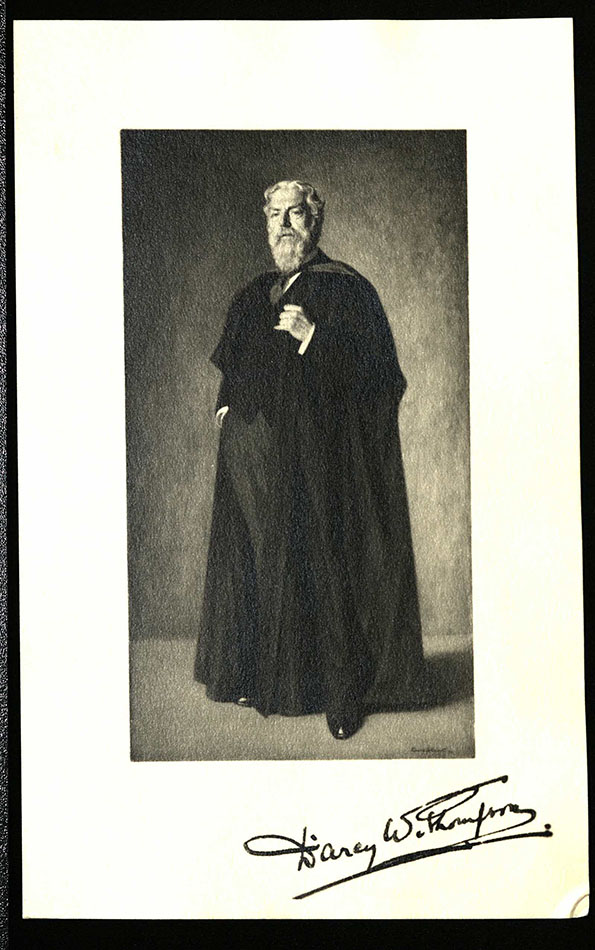
The image of D’Arcy Wentworth Thompson as a solitary figure, put forth by Stephen J Gould in D’Arcy Thompson and the Science of Form in 1971, was long held by the academic community. In recent years, however, and with the help of a 2002 revision by Gould, this portrayal has been debunked. With access to the University of St Andrews Special Collections, which holds over 30,000 items from Thompson’s personal archive, and with generous funding from the Strathmartine Trust, we have seen just how incorrect this solitary depiction was, just how large a network of correspondence the man had, and just how kind and personable the great polymath was.
Between the publication of the two editions his book, On Growth and Form, D’Arcy was in contact with many mathematicians including Joseph Larmor, Alfred George Greenhill, William Peddie, Dorothy Maud Wrinch and Geoffrey Thomas Bennett. Here we will discuss the latter two correspondents, Wrinch and Bennett, where we found wonderful examples of the friendships D’Arcy had with other mathematicians; both contributed their mathematical knowledge and greatly aided D’Arcy in his writing.
Dorothy Maud Wrinch (1894-1976) was a mathematician and biochemist, whose major contribution was in researching the application of maths to biomolecular structures. Wrinch met D’Arcy through the Aristotelian Society, where she attended a debate between D’Arcy Thompson and John Scott Haldane. D’Arcy would go on to become something of a father-figure, a mentor, a supporter of her work, and, of course, a friend. We discovered the true nature of their relationship through reading their correspondence; many letters are available in Special Collections at the University of St Andrews.
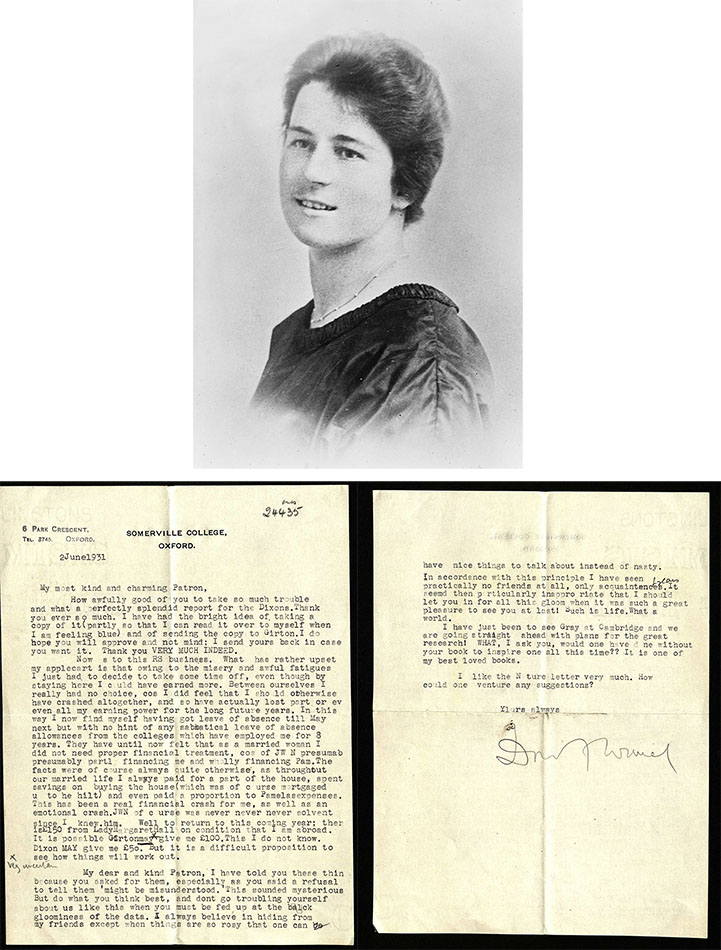
Wrinch addresses D’Arcy as her “most kind and charming patron” (ms24435) and calls herself his “most grateful and devoted disciple” (ms24454). We found that these, amongst other such phrases from their letters, demonstrated her high regard for him, and it is clear to us that he too thinks very highly of her, describing her as “learned and beautiful” in a letter to Greenhill (ms28729). Not only did the two support each other in the academic sphere, but they also did in more personal matters. When Wrinch finds herself in a situation where she alone has to make a living for her herself and her young daughter, her husband having been institutionalised from alcoholism, D’Arcy takes it upon himself to seek financial assistance for her. He contacts the Royal Society (ms24469) and his network of other friends (for example, G. T. Bennett (ms26208)), going above and beyond to help her. There is no doubt that Wrinch greatly appreciated the generous support that D’Arcy gave her in all manner of ways, from reviewing her papers to writing her references for her academic endeavours. He clearly had a soft spot for Wrinch: in his own words, “an old man’s love” (ms24476/9).
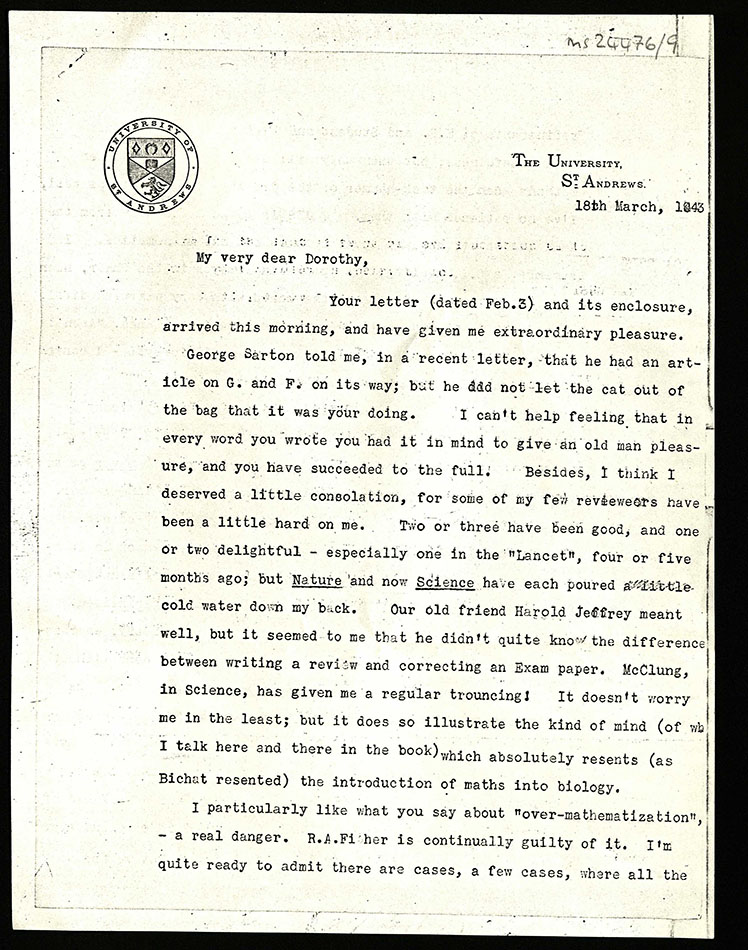
In their academic discussions, Wrinch was never shy in asking D’Arcy for comments or advice on her work; D’Arcy was never shy in imparting his experience and wisdom. We found a great example of this in ms24450 and ms24476/1, where Wrinch asks D’Arcy to help her understand some curves which she thinks could resemble birds’ wings and D’Arcy explains that the curves better remind him of a bird’s body or the horizontal cross-section of a yacht; or in ms24444 and ms24446 where Wrinch asks D’Arcy for feedback on her cytology paper and guidance on what to do with it.
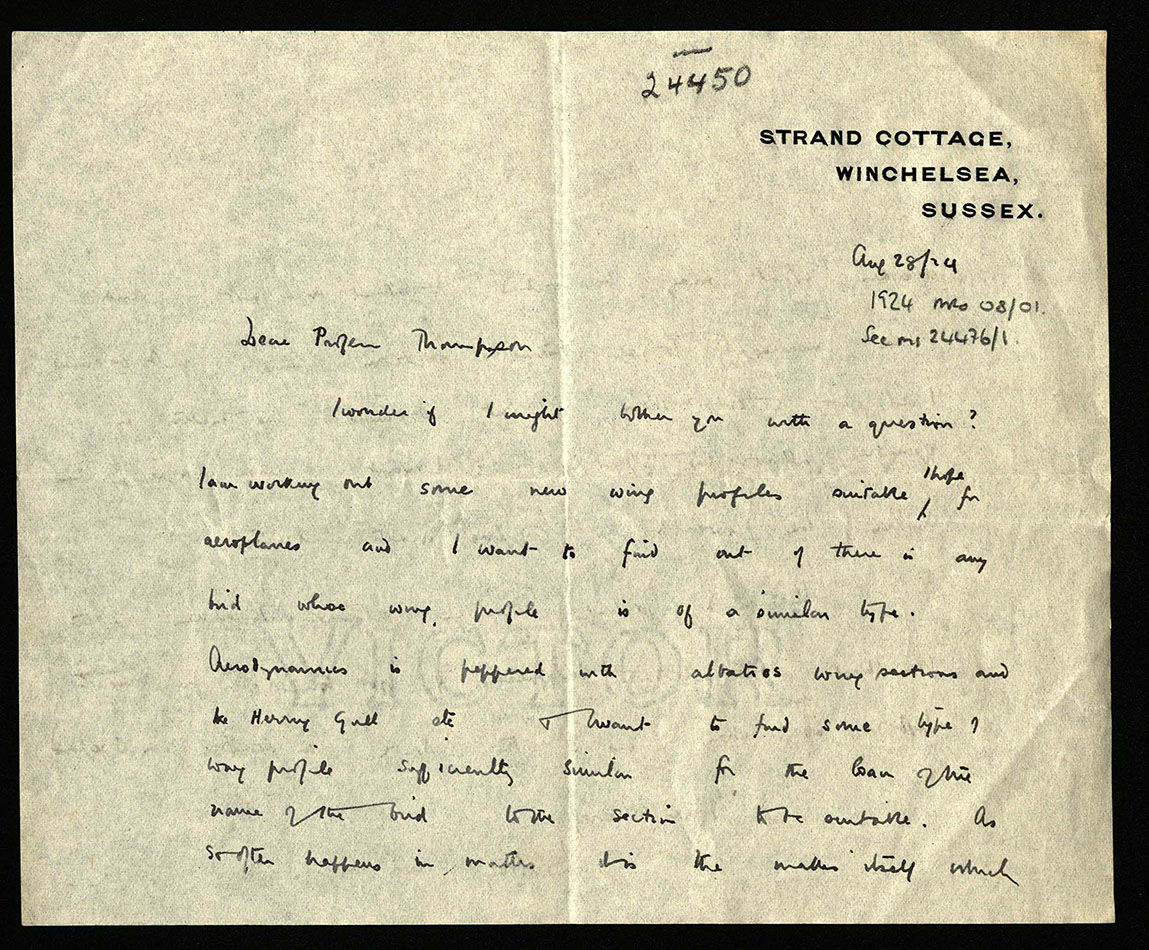
We cannot uphold the view that D’Arcy was a solitary figure when he, in fact, turns to Wrinch for help when writing his second edition of On Growth and Form. In the aforementioned letter to Greenhill (ms28729), D’Arcy tells Greenhill to send back the proof-sheets of the 2nd edition which he sent him before, and to think no more about them, for Wrinch will be able to provide D’Arcy the help he needs: “She is interested in G. and F., and I am sure she will do what is necessary, without it being much of a trouble to her.” The mathematical help D’Arcy asks for from Wrinch is in understanding the conformal series of curves formed by a shrinking gelatine figure (ms24476/3). D’Arcy is interested in Emil Hatschek’s gelatine shrinkage-figures, particularly the squat cylinder of gelatine which shrinks to form a shape that closely resembles a typical shark vertebra. He asks Wrinch to consider the intermediate stages of the transformation of the gelatine for him, and although he is unable to understand the maths that Wrinch sends him in response, deeming it “too deep”, he does include a “note on shrinkage” in his new edition of On Growth and Form.
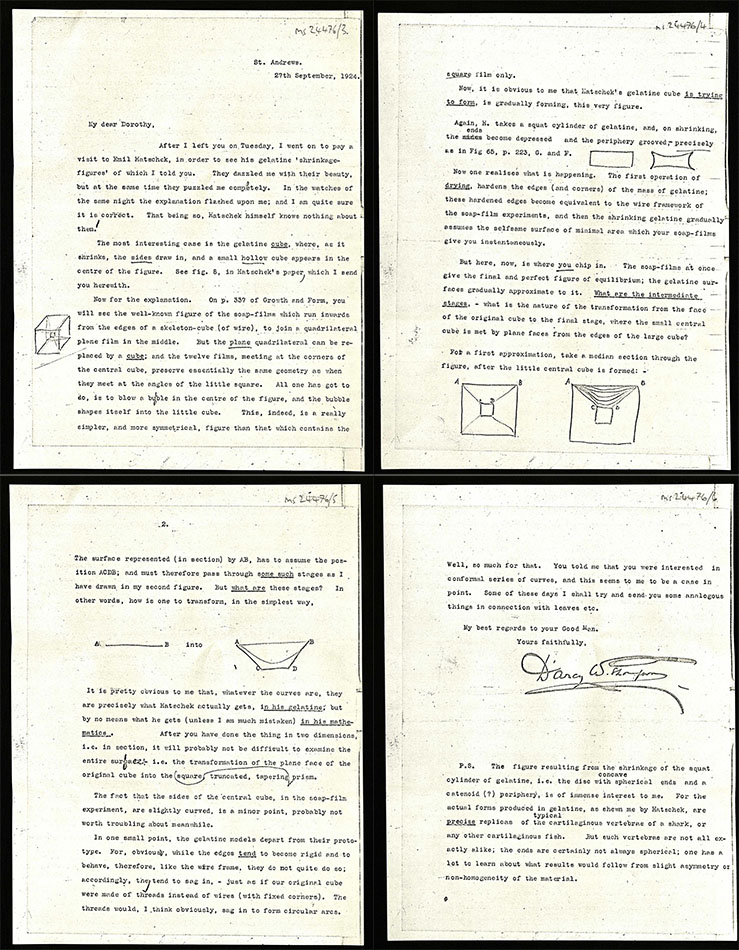
Another contemporary whose letters we looked at in the St Andrews Special Collections was Cambridge Professor of Mathematics, Geoffrey Thomas Bennett (1868-1943), one of the closest friends and supporters of D’Arcy in the lead up to the second edition of On Growth and Form. Over 250 letters survive between the two in the 20 years between 1923 and 1943 and over this period we saw the relationship grow from merely academic to personal. The first letter was a note from D’Arcy, reaching out to Bennett after hearing he had been reading and noting corrections on the first edition of the book (ms26197).
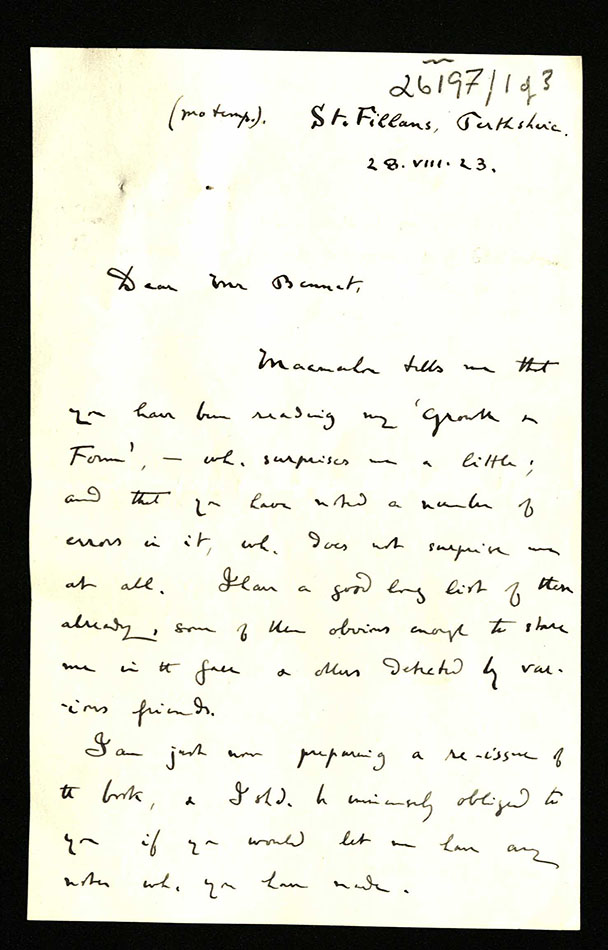
At this point, twenty years before the second edition was published, D’Arcy was already preparing for a re-issue of the book and wrote: “I should be obliged to you if you would let me have any notes which you have made.” The fact that D’Arcy was the initiator of the correspondence suggested to us that he not only was open to assistance from contemporaries, but actively sought it out. Furthermore, D’Arcy prompted Bennett to give his own suggestions on new matter, going so far as to say he “should greatly value them.”
We observed the malleability of D’Arcy towards his work in Chapter 11 of the second edition of On Growth and Form. In the second edition, the whole chapter was retitled after Bennett suggested that “equiangular” represented the spiral D’Arcy described better than the original “logarithmic” (ms26066). Moreover, D’Arcy lifted a construction of the spiral in this chapter directly from Bennett’s letters, and notes this in a footnote with “this simple but novel construction I owe, like so much else, to G.T. Bennett.” D’Arcy had originally wanted to give more praise to the piece of mathematics here, but Bennett insisted that he would be content with the above, and D’Arcy obliged. The changes and additions made in this chapter clearly represents a huge amount of respect for his contemporaries.
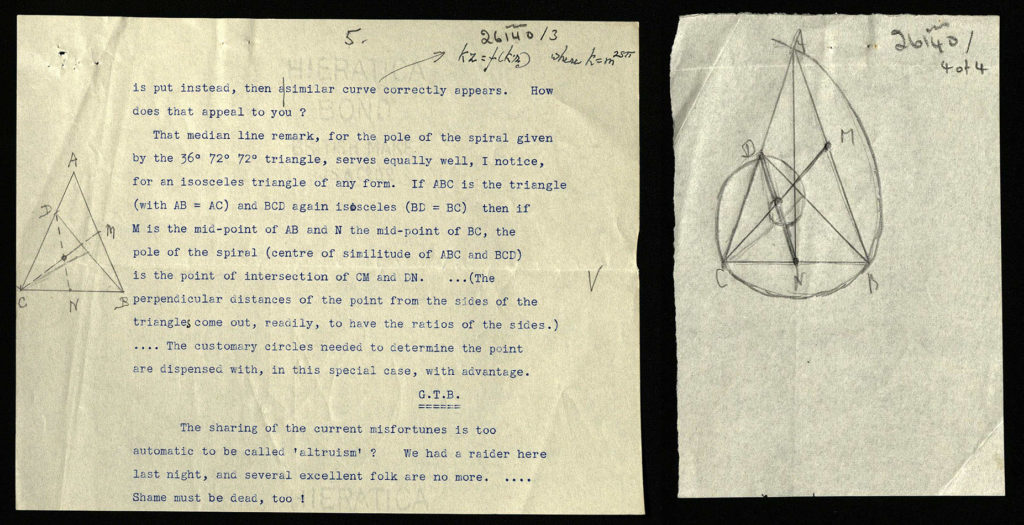
Finally, over the course of their correspondence we could see their friendship blossom. Once the business of corrections or mathematical discussion was out of the way, the two shared gossip about academic societies, updates on the bombing in their local areas and recreational mathematical problems. Some examples of puzzles discussed are the eight queens problem and the pandiagonal magic square, a magic square in which all broken diagonals must also add to the magic constant. Given that these are mathematical problems and D’Arcy was a self-proclaimed “ignorant” of mathematics, his interest in them indicated to us the influence Bennett had on him and his showing an interest in recreational fields outside of his comfort zone certainly displays the fact that D’Arcy was not a loner, nor had any predisposition to be one.
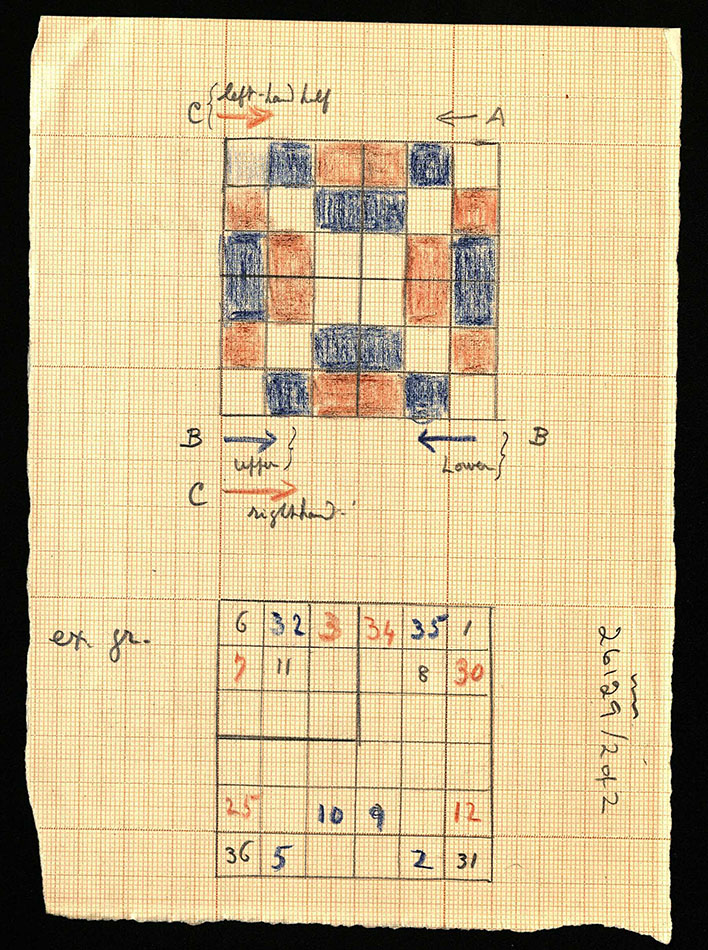
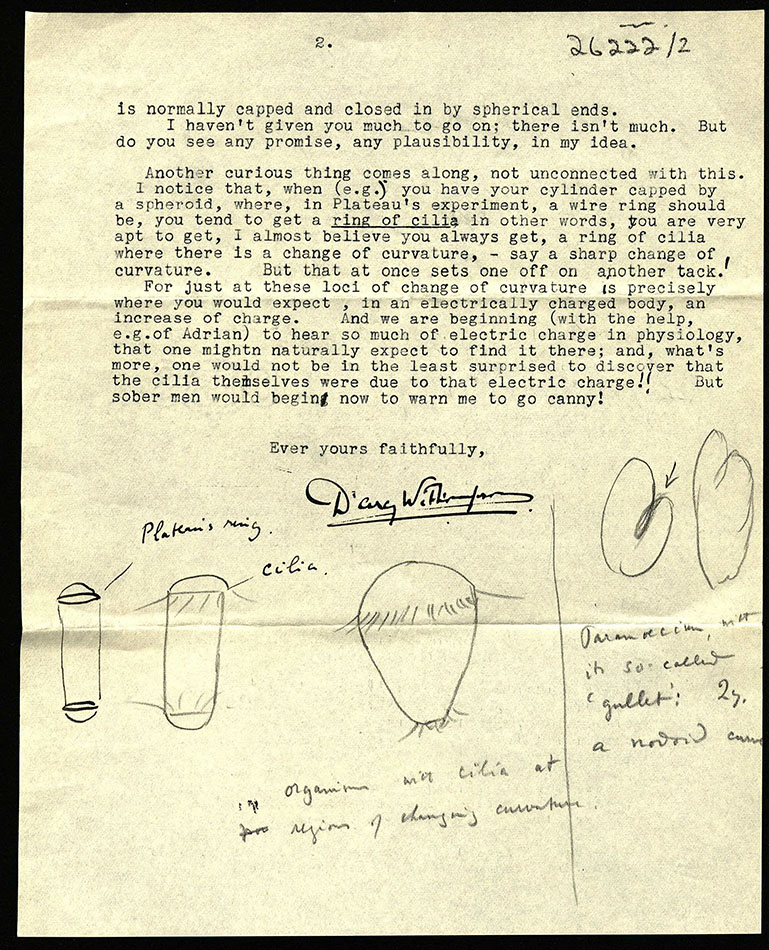
In studying these two correspondents, we have seen that the old theory of D’Arcy being an isolated “crank” has a weak foundation. D’Arcy had a vast network of academics who supported his ideas, helped to cultivate them, and quickly grew to enjoy his correspondence and company. His quasi-paternal relationship with Wrinch displayed a real soft spot and willingness to put a friend’s need first, and the close bond he shared with Bennett displayed how he could turn professional relationships into personal ones, with little more than some words on paper.
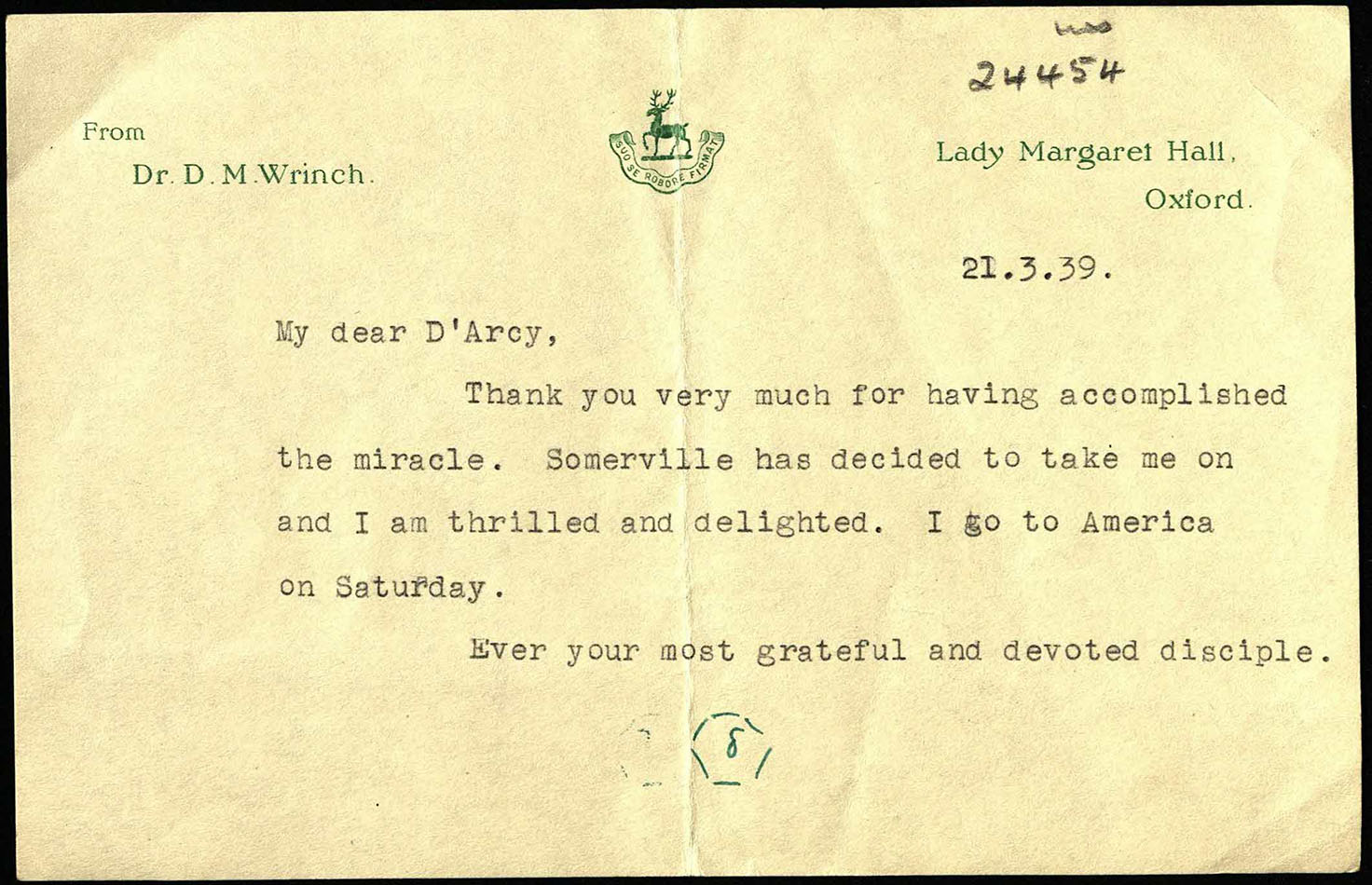
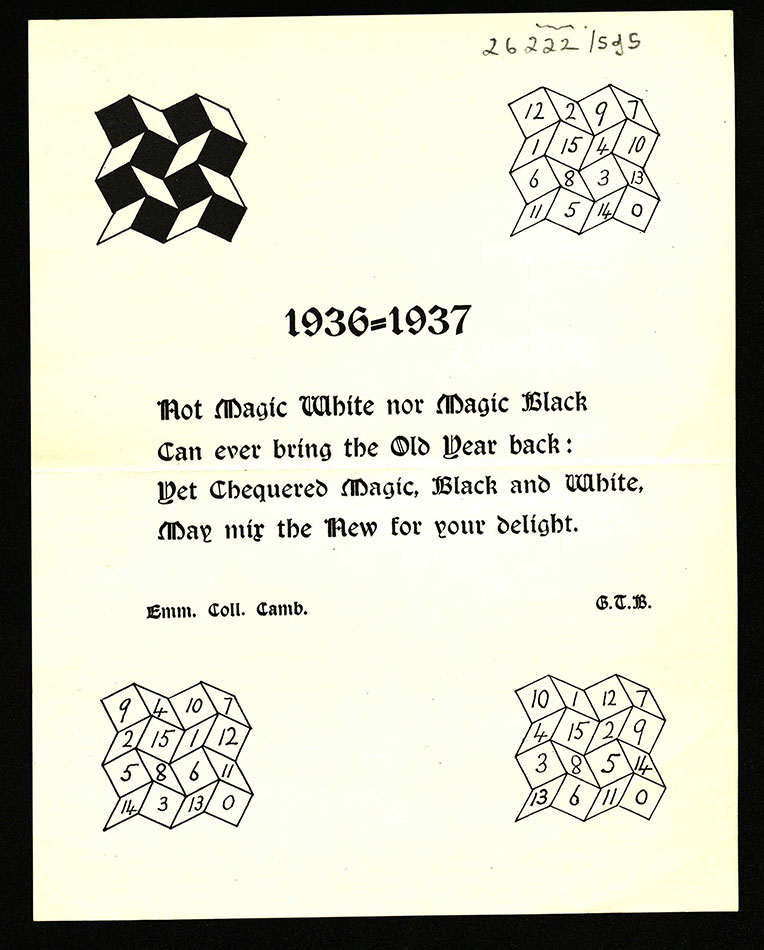
If you wish to find out more about the D’Arcy Thompson collection, visit the Special Collections’ website, search our online catalogue here, or dedicated website, funded by The Strathmartine Trust.
Edd Smith and Cammy Srirnam